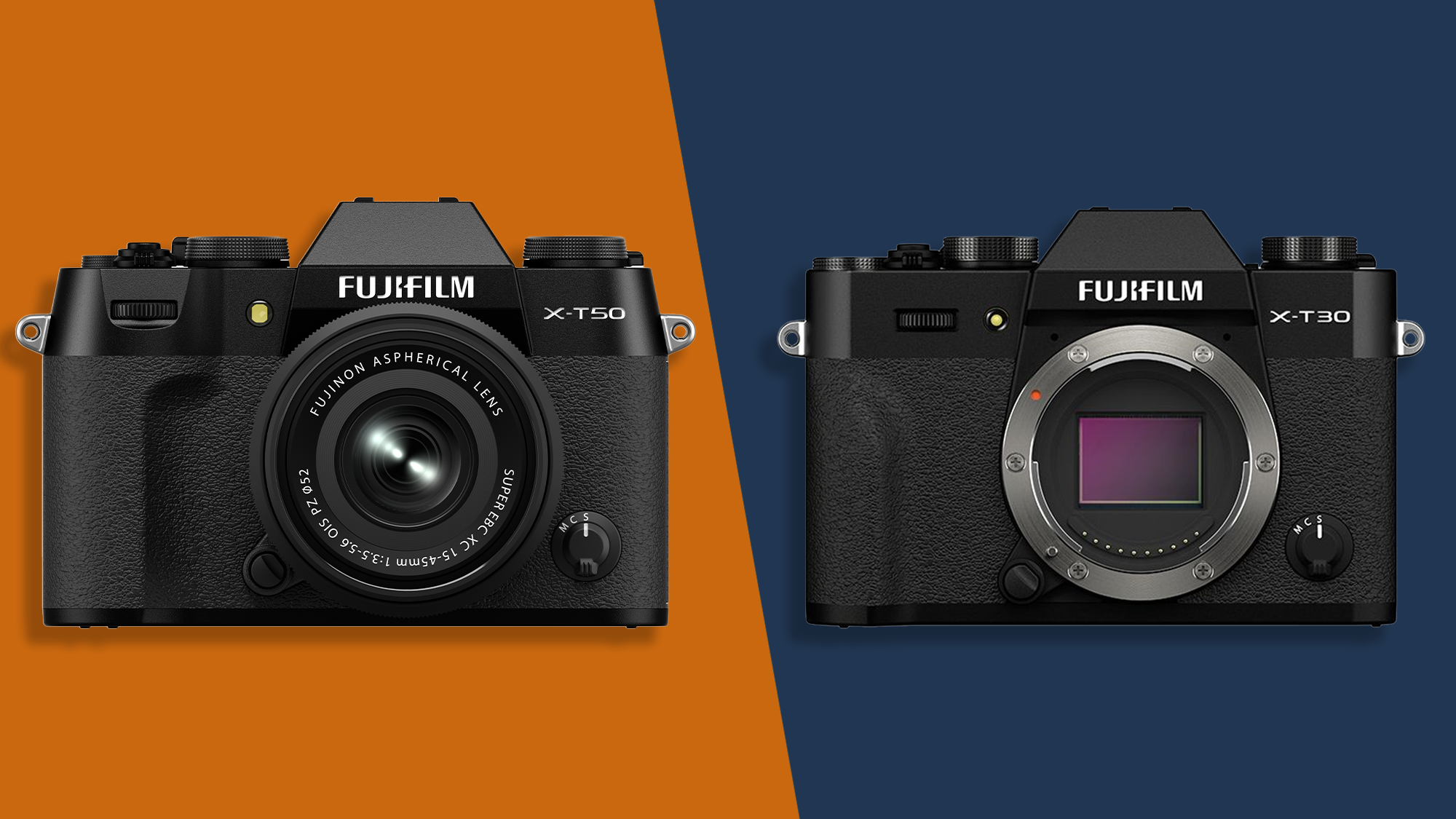
The Fujifilm X-T50 is a major step up from the X-T30 II. A 40MP sensor and 6K/30p video, as well as in-body image stabilization and enhanced autofocus, give it proper hybrid performance. Its refined retro design has serious appeal, while a new Film Simulation dial makes it friendly for creative beginners. The big kicker is the price, which is far from entry-level.
For
- Up to 7 stops of IBIS
- 6K/30p video recording
- Film Simulation dial
- Sharper sensor
Against
- Much higher price
- Screen only tilts
- No weather sealing
- Same battery life
A modest upgrade to the original, the X-T30 II is a fantastic mid-range all-rounder. Travel-friendly proportions make it a great value choice for everyday shooting, with solid handling and useful dials. Its 26.1MP sensor and reliable autofocus perform well, with limited noise in low light. Uncropped 4K video is excellent as well, if you can live without in-body image stabilization.
For
- Attractive styling
- Good handling
- Film simulation modes
- Uncropped 4K video
Against
- No IBIS
- Screen only tilts
- Some awkward buttons
- Minor upgrade from X-T30
It’s official: the Fujifilm X-T50 is here. Three years after the X-T30 II hit shelves as a modest upgrade to the original X-T30, Fujifilm fans finally have a mirrorless successor to consider. Based on our Fujifilm X-T50 review, it’s a very different camera to what went before, thanks to a raft of impressive upgrades.
Chief among them is a 40MP APS-C sensor borrowed from the X-T5, which comfortably trumps the 26.2MP number found in the X-T30 II. We’re also glad to see the introduction of in-body image stabilization, another significant feature which was missing from its predecessor.
Physically, the X-T50 retains the established retro styling of the X Series, but a dedicated control dial now puts Fujifilm’s Film Simulation modes at the fingertips of beginners. Then you have an X-Processor 5 inside, plus improved video resolution at 6.2K. Across the board, the Fujifilm X-T50 betters the X-T30 II, a model we already rated as one of the best cameras for beginners.
But it’s not quite that simple. With those enhancements comes a 50% price increase, making the X-T50 substantially more expensive than the X-T30 II was at launch. This makes it a bigger ask for Fujifilm newbies and also puts it closer to the X-T5 on specs and spend. So the question remains: should you upgrade to the X-T50, or try to find stock of the more affordable X-T30 II?
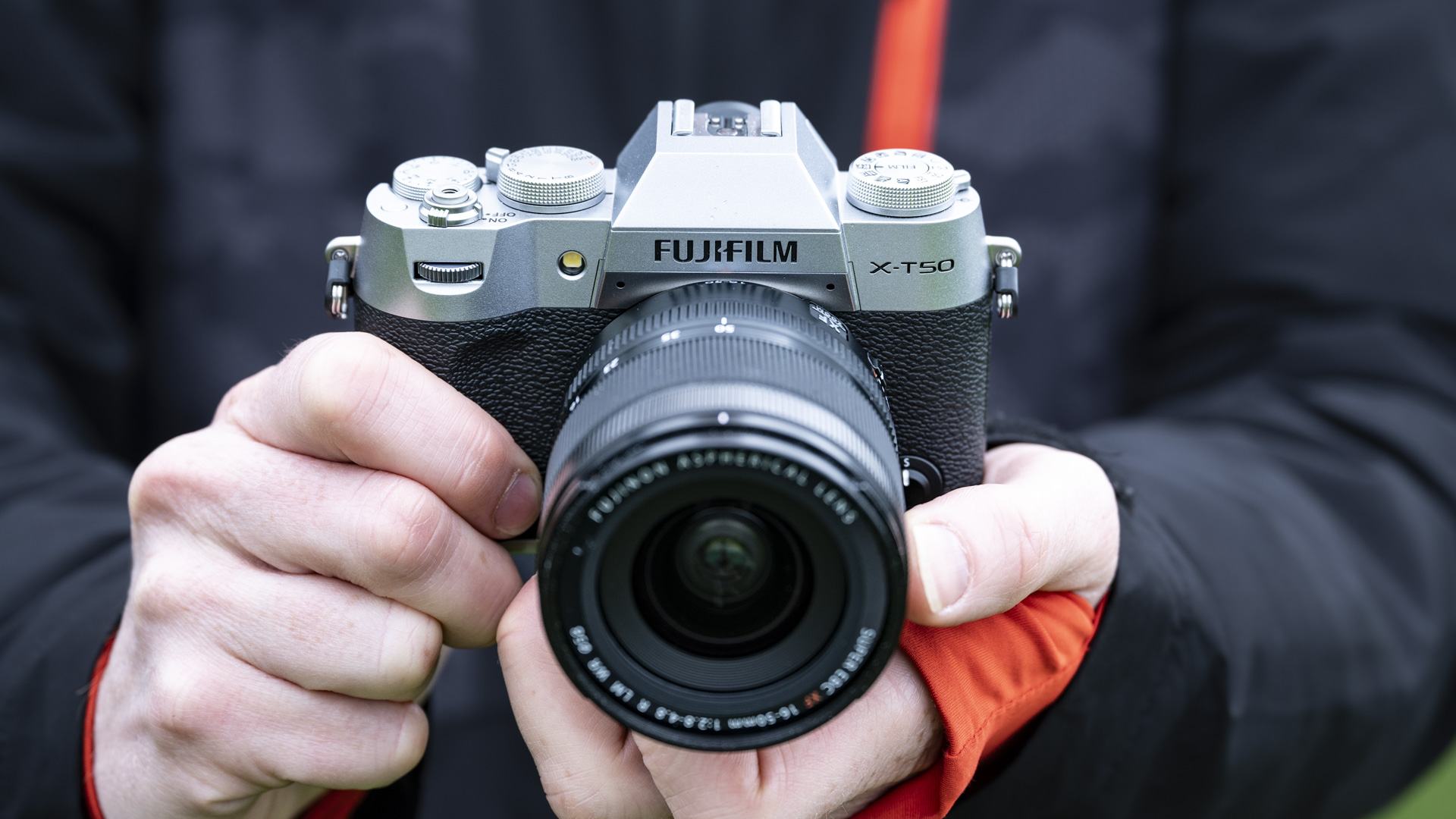
Fujifilm X-T50 vs Fujifilm X-T30 II: Price and availability
- Fujifilm X-T50: $1,399 / £1,299 / AU$2,599 (body only)
- Fujifilm X-T30: $900 / £749 / AU$1,585 (body only)
The Fujifilm X-T50 was announced at Fujifilm’s X Summit on 16 May 2024. It’s due to hit shelves in June 2024, with a launch price of $1,399 / £1,299 / AU$2,599 (body only).
The Fujifilm X-T30 II launched on 2 September 2021, with a body-only price of $900 / £749 / AU$1,585. That remains its price today, although it’s widely out of stock at many online retailers.
From the numbers above, it’s impossible to ignore the huge jump in price from the X-T30 II to the X-T50. The Fujifilm X-T30 II was accessible to beginners as a hybrid to grow with, offering excellent everyday value. In contrast, the X-T50 – at around 1.5x the price – is a much more significant investment. While that is reflected in the upgraded specs, it makes the X-T50 harder to recommend for new buyers, especially when compared to more affordable rivals like the Canon EOS R10.
Notably, the X-T50’s price tag puts it closer to the X-T5 from which it takes its sensor, processor and IBIS system. With the Fujifilm X-T5 retailing at $1,700, there’s proximity between the two models. In the short term, this could divide buyers and actually drive more sales to the smaller, cheaper X-T50. In the long run, it reflects a general upward trend in Fujifilm pricing, as seen with the X100VI. We’d expect to see that pattern continue with the X-T6, which is rumoured to arrive in the next 12-18 months.
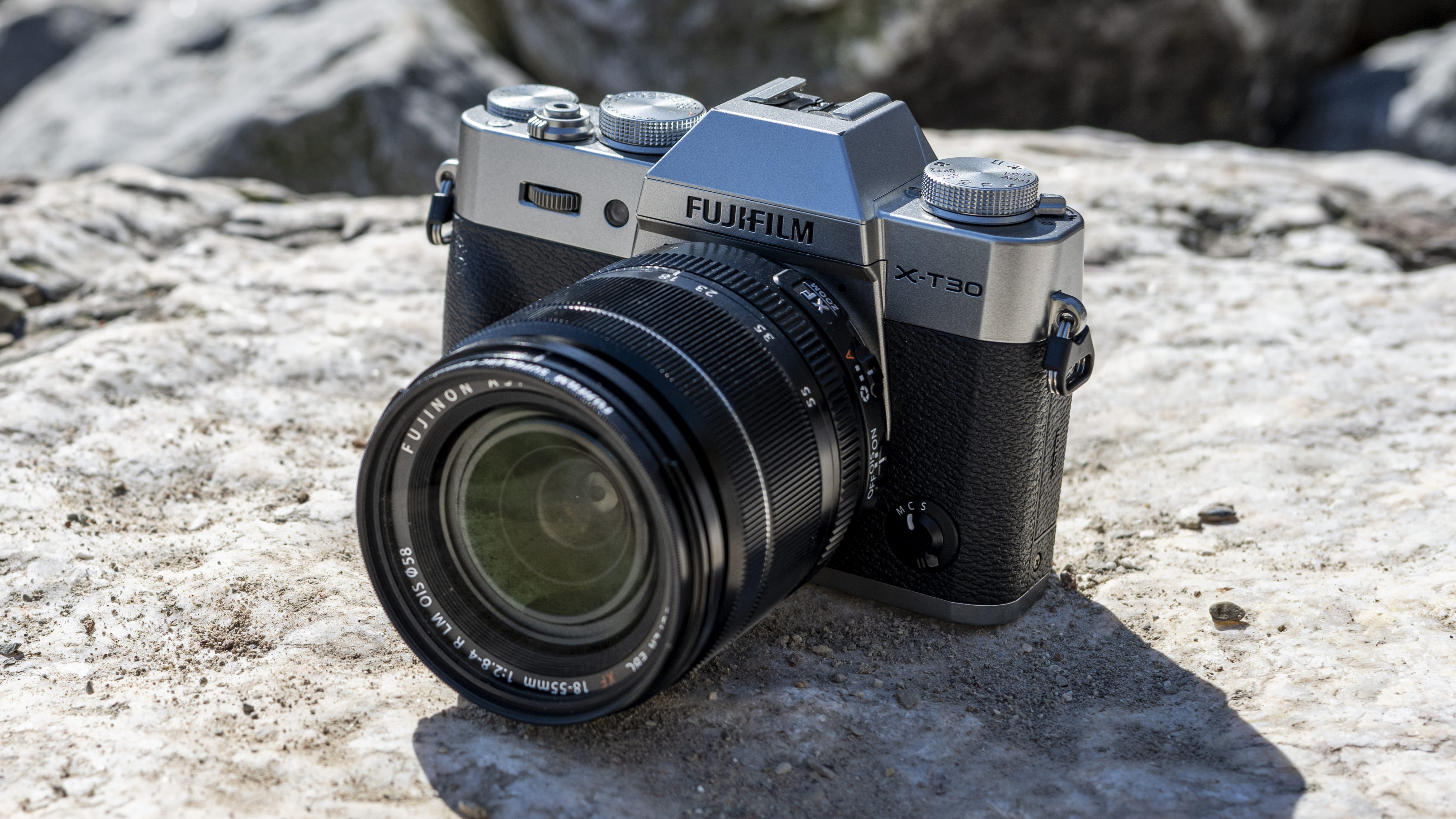
Fujifilm X-T50 vs Fujifilm X-T30 II: Design and handling
- Fujifilm X-T50: 438g, Film Simulation dial, 3-inch 1.84m-dot tilting touchscreen
- Fujifilm X-T30: 378g, shooting mode dial, 3-inch 1.62m-dot tilting touchscreen
Fujiiflm’s X Series cameras have always benefitted from retro-style bodies that tap into the healthy market for nostalgia. The X-T50 doesn’t buck that trend, but it does refine the formula. Where the X-T30 II is boxy, its successor takes a rounded approach, with curved ends and an attractive tapered top to keep things fresh.
Direct access controls remain plentiful, but the Drive mode dial has been repurposed for the X-T50. It’s now dedicated to Fujifilm’s Film Simulation modes. These lean into the vintage theme by emulating the look of analogue film. The X-T30 II offered 18 Film Simulations through its touchscreen menu. The X-T50 offers 20, 11 of which can be accessed via the dial. There are three assignable slots, plus an Auto setting – although there’s no option to set your own recipes on the dial.
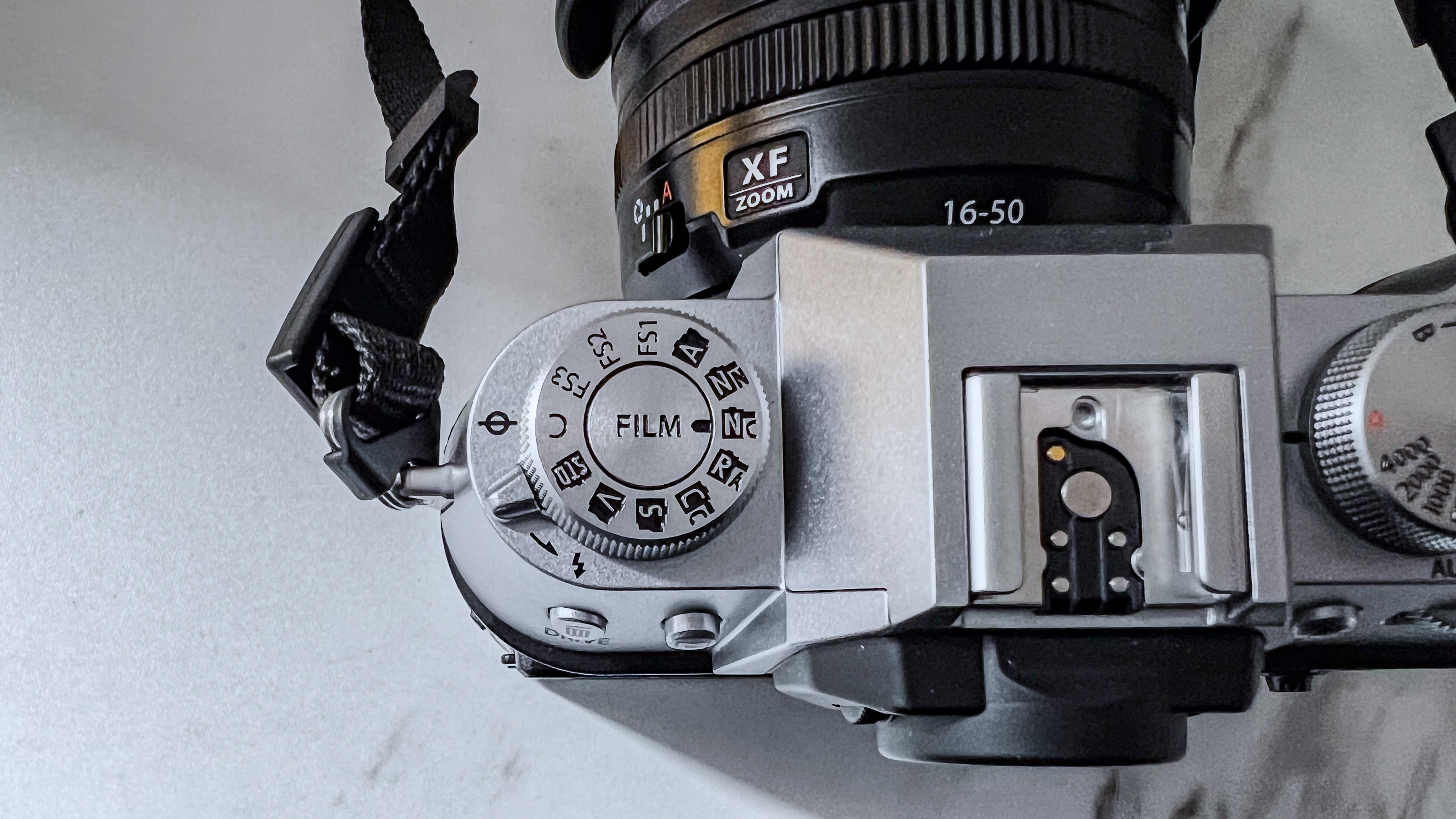
As we noted in our review, this new control function has a clear audience in mind. While a Drive mode dial would be much more useful for enthusiasts, putting Film Simulations on top makes these creative modes instantly accessible for beginners, through a tactile interface that complements the retro aesthetic. Rather than hobbyists, Fujifilm is betting that this will appeal to the same Gen Z photographers who made the X100V go viral.
In our review of the X-T30 II, we commented favorably on its travel-friendly dimensions, which make it a neat camera to keep in a bag for everyday use. The X-T50 is still a portable shooting tool, although marginally larger: 5.6cm longer than the X-T30 II, and 60g heavier. In essence, it’s a mini X-T5, albeit with a plastic body and no weather seals.
Like the X-T30 II, the X-T50 has a tilting touchscreen, which lacks the versatility of a fully articulating screen (like the one found on the Fujifilm X-S20). The resolution has been upgraded, though, from 1.62 million dots to 1.84 million. The pair share the same 2.36m-dot EVF.
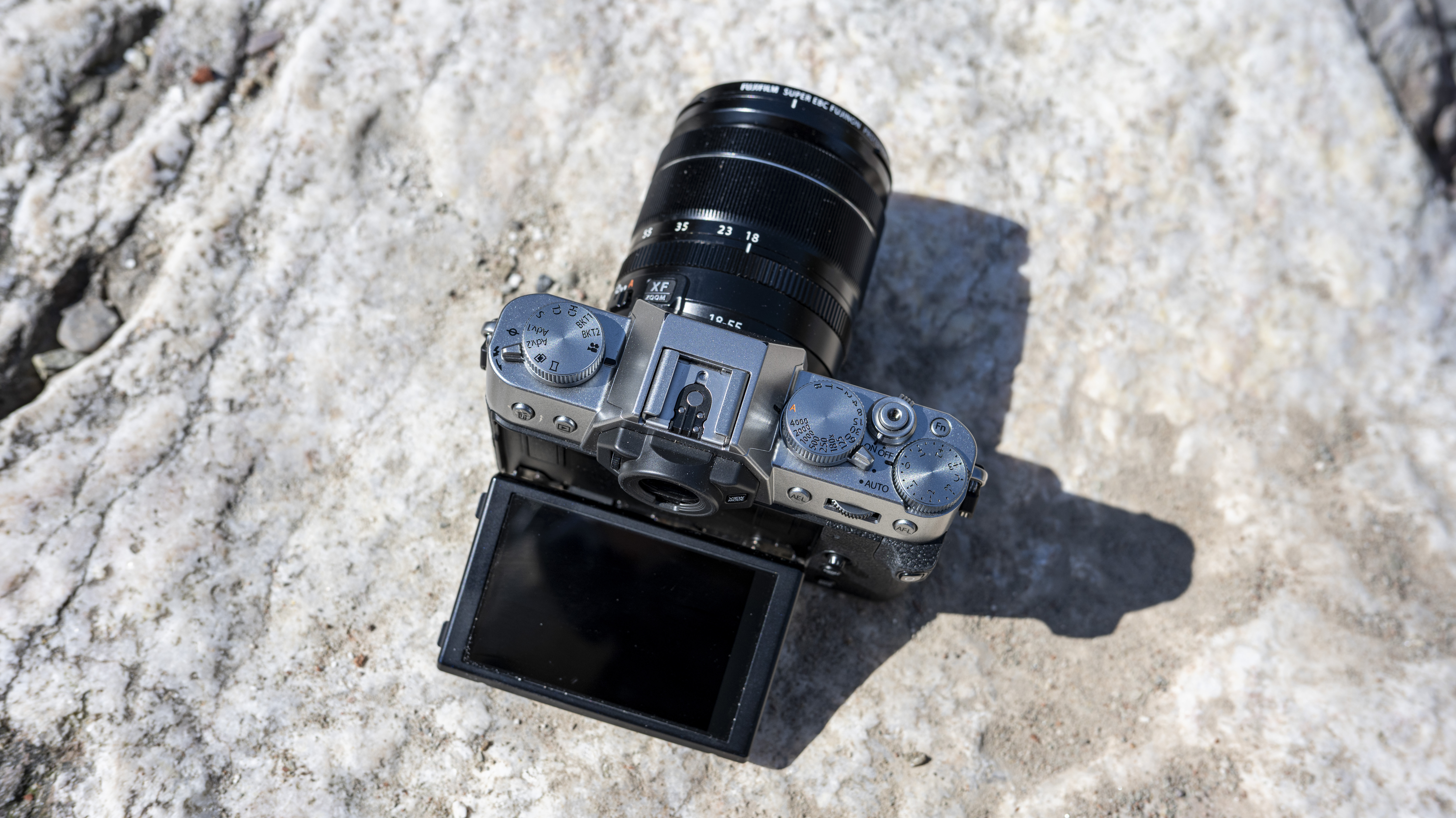
Fujifilm X-T50 vs Fujifilm X-T30 II: Sensor and image quality
- Fujifilm X-T50: 40MP APS-C sensor, 6.2K/30p video
- Fujifilm X-T30: 26.1MP APS-C sensor, 4K/30p video
The Fujifilm X-T30 II was no let-down in the image quality department, employing the same 26.1MP APS-C sensor and X-Processor 4 as the X-T4 (and the X-T30). Stills impressed in testing, delivering very good detail, low noise and nice dynamic range in a range of scenarios.
The X-T50 steps things up significantly, taking the 40MP sensor and powerful X-Processor 5 from the X-T5 (and, by extension, the X100VI). The result is a camera that shoots unbeatable stills for an APS-C model. While the higher resolution does result in more noise at higher ISOs, it’s not drastic. You also gain huge cropping flexibility with those extra pixels, as evidenced by the presence of a digital teleconverter for 1.4x and 2x magnification.
Video performance is also significantly better. While the quality of 4K video captured by the X-T30 II was excellent, the X-T50 can record 6K/30p. It also increases 4K frame rates to 60p, boosts 4K/30p recording times from 30 to 60 minutes, and adds support for Apple ProRes RAW. Plus it offers 4:2:2 10-bit internal recording, versus external recording on the X-T30 II via HDMI. By every metric, the X-T50 is a stronger hybrid for video.
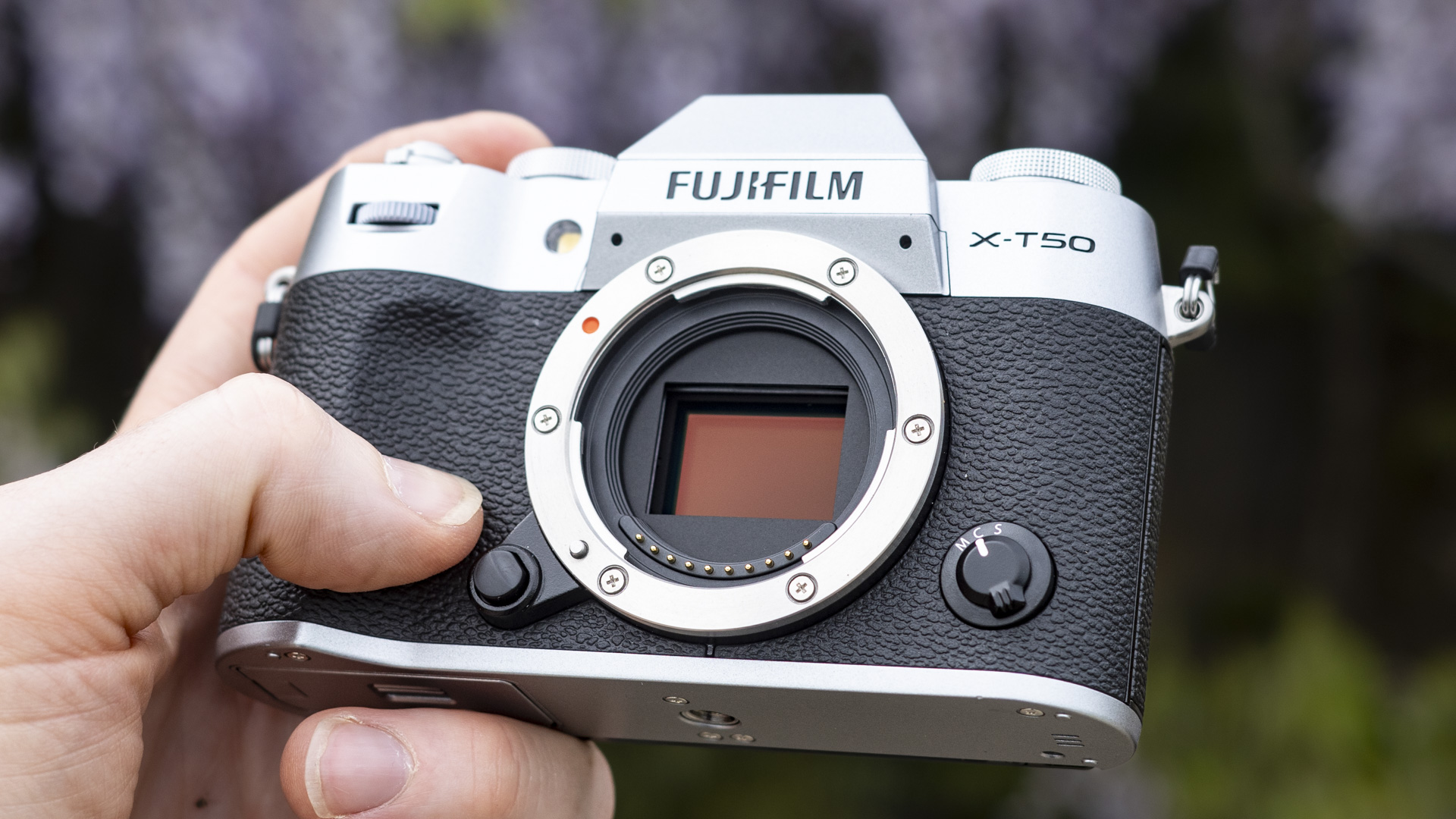
Fujifilm X-T50 vs Fujifilm X-T30 II: Autofocus and performance
- Fujifilm X-T50: 425-point hybrid AF, 8fps, 390-shot battery life
- Fujifilm X-T30: 425-point hybrid AF, 8fps, 390-shot battery life
It’s a similar story with autofocus: the hybrid phase detection system in the Fujifilm X-T30 II performed well in our review, offering reliable face and eye tracking AF. The X-T50 goes a big step further, using Fujifilm’s latest AI-powered autofocus system to accurately detect animals, vehicles, people and more. It’s a comprehensive upgrade and one that, again, brings the X-T50 closer in performance terms to the X-T5.
That’s not the case when it comes to burst shooting speeds. Both the X-T30 II and the X-T50 have identical continuous shooting performance: 8fps with the mechanical shutter and up to 20fps using the electronic shutter. Where the X-T50 does have the edge is the actual speed of the electronic shutter, which can fire for 1/180,000 of a second. That’s significantly faster than the 1/32,000 of the X-T30 II, and puts the X-T50 right up there with pro cameras.
Battery life is identical across both cameras. Fujifilm rates the X-T30 II and the X-T50 for 390 frames with the included NP-W126S battery. On the one hand, it’s impressive that the newer model offers enhanced performance without sacrificing longevity. On the other, it misses out on the beefier NP-W235 cell which gives the X-T5 a 580-shot battery life.
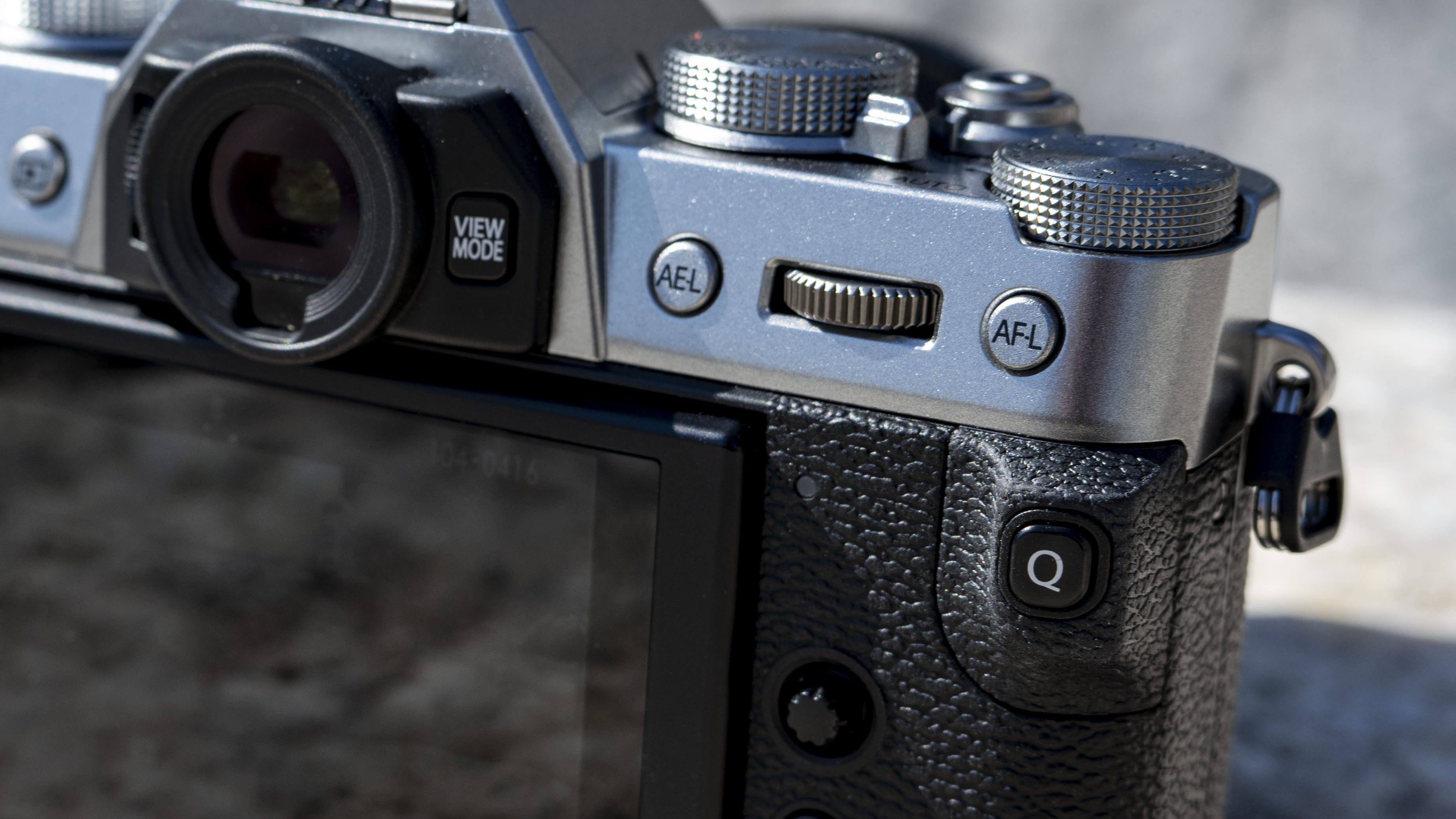
Fujifilm X-T50 vs Fujifilm X-T30 II: Image stabilization
- Fujifilm X-T50: 5-axis IBIS, 7 stops compensation
- Fujifilm X-T30: N/A
One notable omission from the X-T30 II – and the X-T30 before it – was in-body image stabilization. This wasn’t a deal-breaker for stills work, especially when paired with a stabilized lens. But it did limit the appeal for handheld videography. Realistically, it meant that you needed a tripod or gimbal to avoid shaky footage or blurry low-light shots, which didn't tally with an otherwise compact mirrorless setup.
That changes with the X-T50. Borrowing again from the X-T5, it inherits the same 5-axis IBIS system, good for up to 7 stops of compensation. That gives it the ability to counteract a significant amount of camera movement during exposures and recordings. This is the first time in-body stabilization has been available in an entry-level Fujifilm X-T camera, and it makes a considerable difference.
In our review, we tested the Fujifilm X-T50 using a lens without optical image stabilization. While it didn’t entirely eliminate camera shake when walking and recording, it did make a difference. If combined with a stabilized lens, we think it would be an effective setup for handheld video.
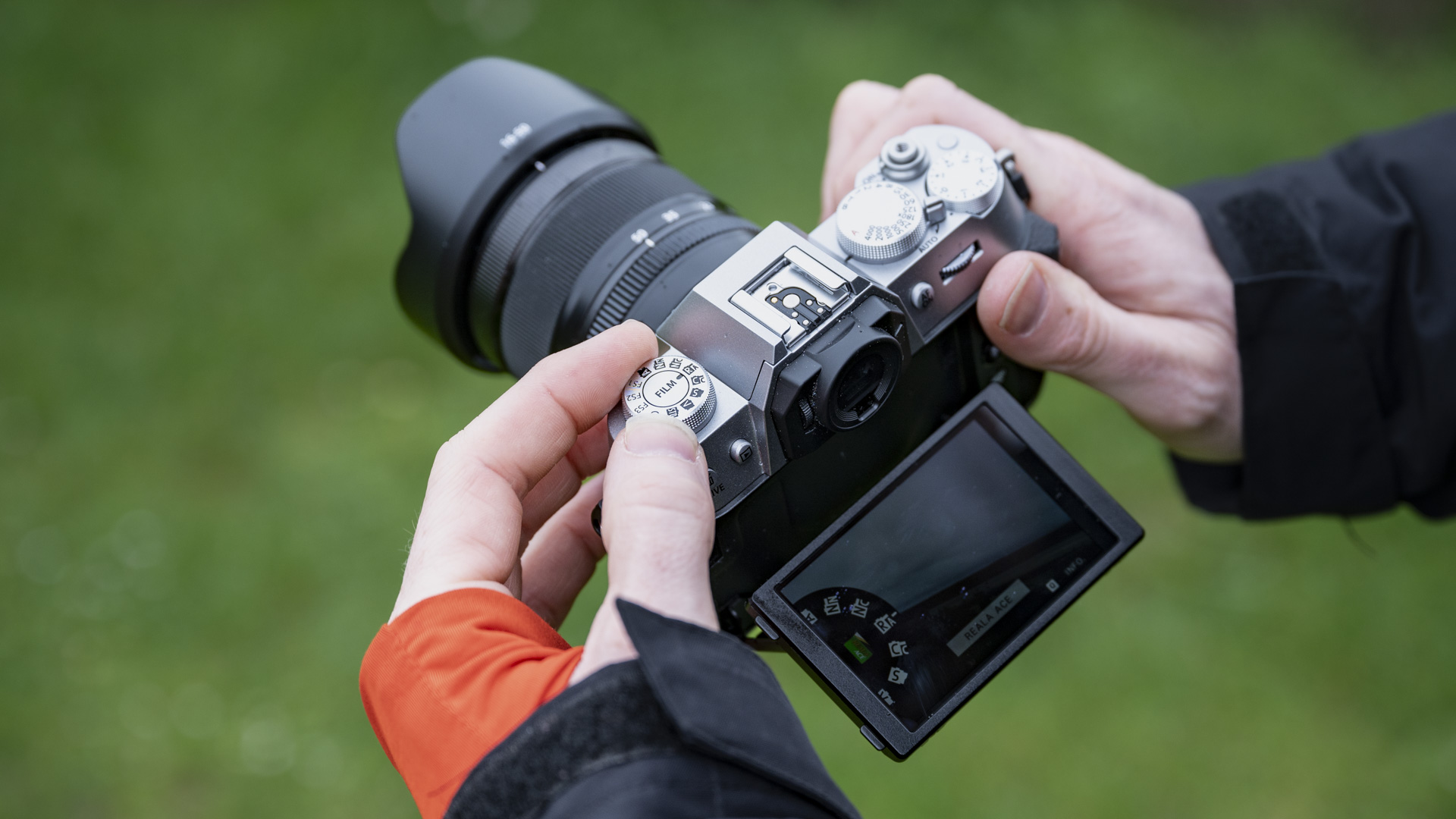
Which one should I buy?
Overall, the X-T50 is clearly a better mirrorless camera than the X-T30 II. It has a sharper sensor, smarter autofocus and records video at a higher resolution. It also benefits from in-body image stabilization and a faster processor.
But it’s also a confusing camera. It doesn’t have the latest battery and uses the same EVF as the X-T30 II. It offers advanced performance, but also a Film Simulation dial, which makes its creative modes more accessible for beginners – at the expense of the Drive mode dial that most enthusiasts would demand.
All of this is underscored by the price factor. At around 50% more expensive than the X-T30 II, any claims that the X-T50 is an entry-level camera don’t add up. Yes, it’s easily the superior hybrid, but it’s also a much bigger investment – one that puts it out of reach for many first-time buyers.
For enthusiasts, the X-T50 is best seen as a cheaper X-T5, with a plastic body, no weather seals and slower burst speeds. If you can live with that Film Simulation dial, you’re getting a lot of X-T5 components for a lower price.
But for someone buying their first Fujifilm camera, the X-T30 II probably makes more financial sense. It’s a great value camera, with solid performance, a lovely design and travel-friendly dimensions. Luckily, Fujifilm has confirmed that the X-T30 II will keep its place in the catalog, at least for now.
You might also like
- Fujifilm X-T50 review: an entry-level upgrade
- Fujifilm X100VI review: the best premium compact
- The best mirrorless cameras: top picks for every budget







